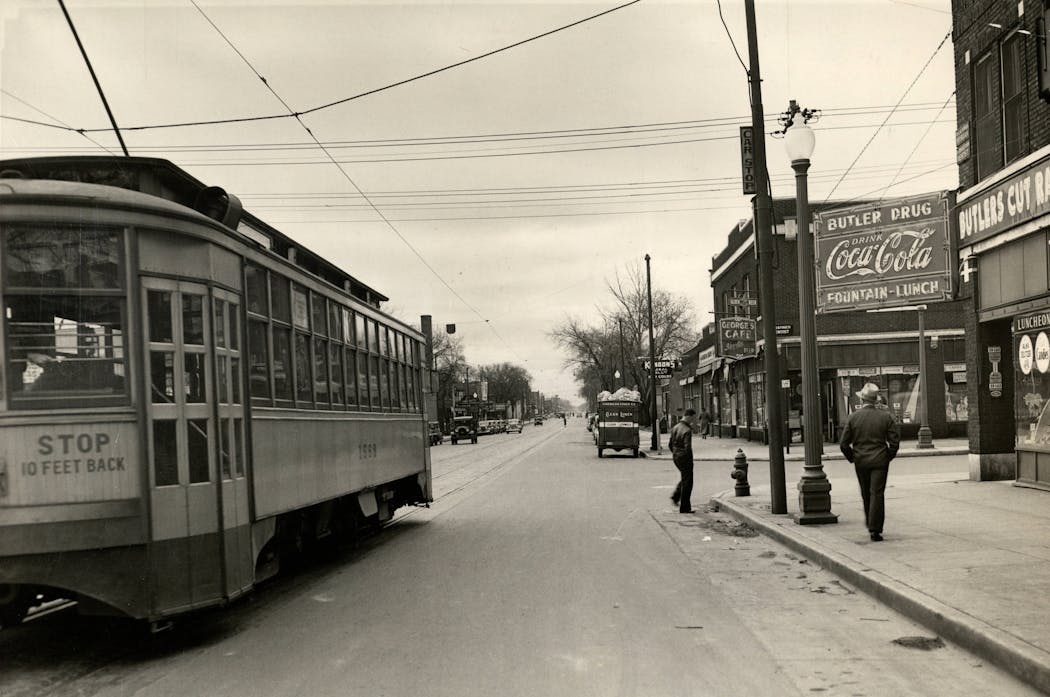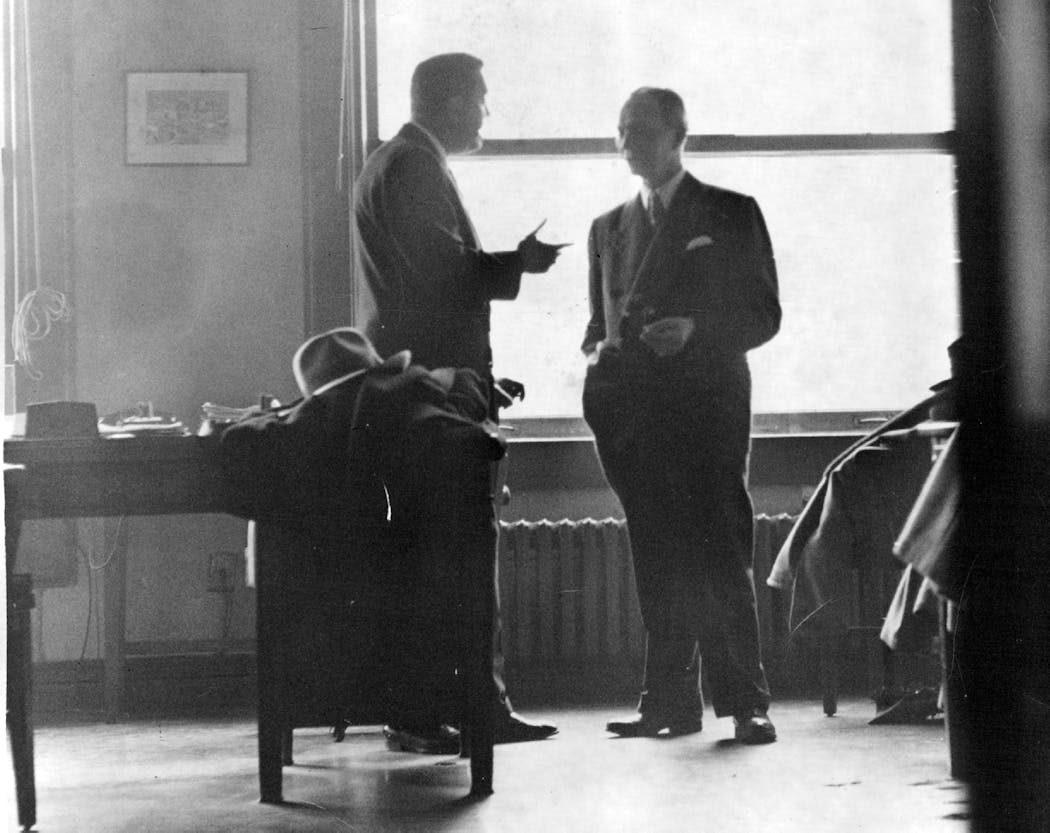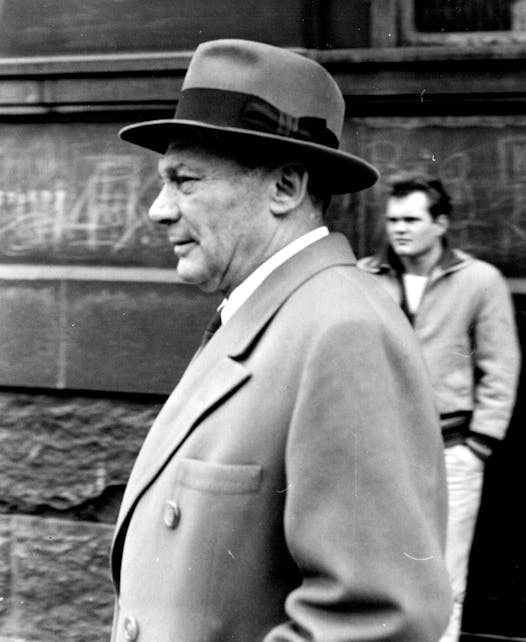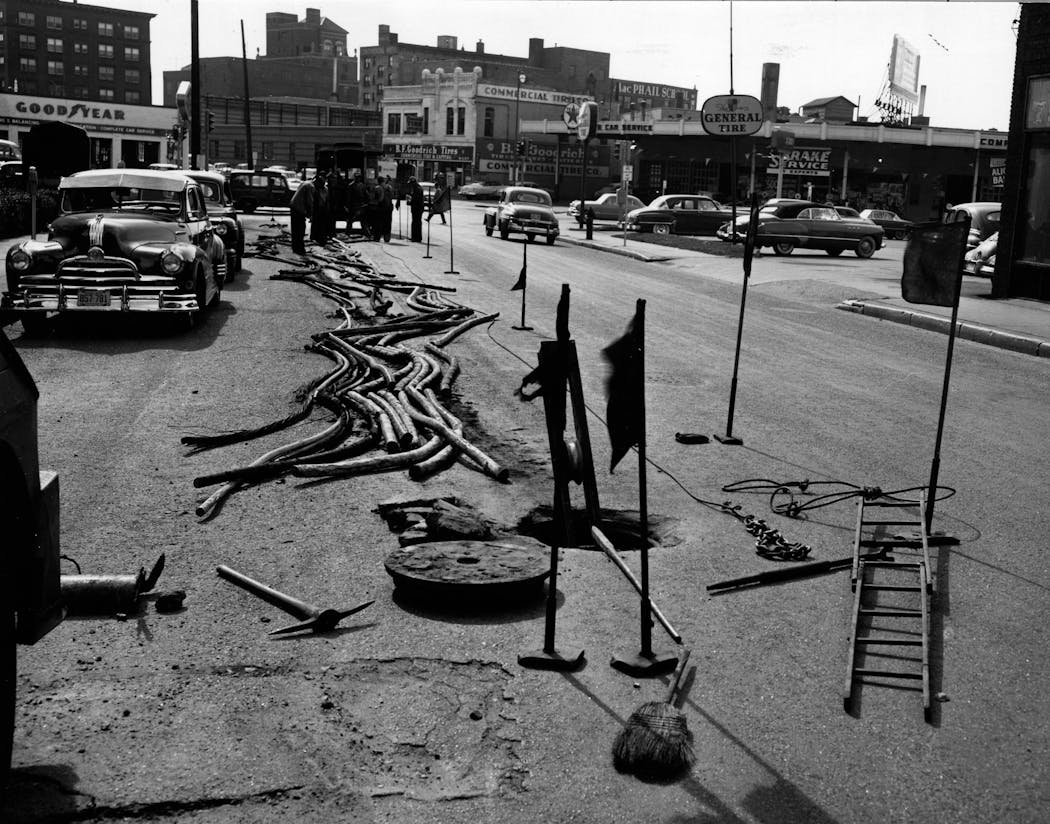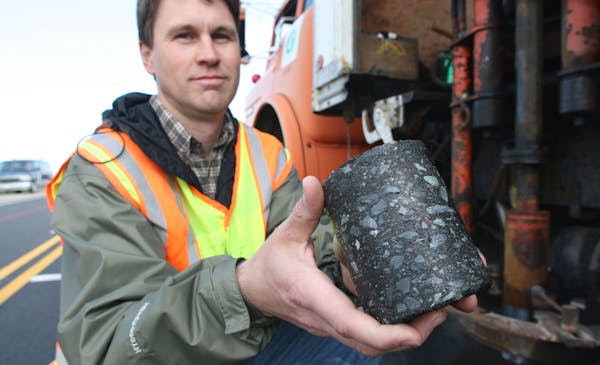Was organized crime behind the demise of the Twin Cities streetcar system?
Listen and subscribe to our podcast: Via Apple Podcasts | Spotify | Stitcher
A well-known photo of grinning men holding a check in front of a burning streetcar remains a potent illustration of the greed that accompanied the 1950s demise of the Twin Cities streetcar system.
It is also a reminder of the unusual characters — several of whom later went to prison — that oversaw what is still one of the most significant shifts in Twin Cities urban life. Streetcars that had rumbled around on city streets since the 19th Century abruptly disappeared, along with the associated electrical wires and rails that once dominated the streetscape.
An anonymous reader asked Curious Minnesota, the Star Tribune's reader-powered reporting project, if it was true that organized crime was behind the destruction of the streetcars and switch to buses. The reader's grandmother was good friends with a woman who was romantically involved with a local gangster and forced to testify at the major streetcar fraud trial, according to family legend.
The short answer is yes, the Twin Cities underworld was involved. But the conversion from streetcars to buses was likely going to happen regardless, since the rise of personal automobiles had gutted the profitability of the region's transit system.
"It happened years sooner than it otherwise would have. And crimes were committed," said rail historian Aaron Isaacs. "If this had been done the normal way, crimes would not have been committed."
Before the region's transit system fell under the public ownership of the Metropolitan Transit Commission in 1970, it was managed by the Twin City Rapid Transit Company (TCRT). Anyone could become a shareholder in that firm by buying publicly traded stock.
Ridership on the system had been falling since the 1920s, but spiked during World War II due to gas rationing, tire rationing, and a pause on new car production, Isaacs said. Company practice was to invest profits back into paying off debt and improving service, rather than paying dividends to investors.
Enter Charles Green, a New York investor who bought many shares of TCRT after the war. Frustrated by the lack of dividends, Green began forming alliances with other shareholders to exert control over the company.
A nightclub meeting
A representative for Green's stockbrokers took him to the Club Carnival nightclub on 16th Street and Nicollet Avenue, where he was introduced to fellow shareholder Isadore "Kid Cann" Blumenfeld, Green testified years later. Since his success as a bootlegger during Prohibition, Blumenfeld had been Minneapolis' most notorious mobster.
They decided to draft help from well-connected criminal attorney Fred Ossanna. The three men began plotting a takeover, and soon gathered enough shareholder votes that Green became president of the company, according to the book "Twin Cities by Trolley," co-authored by Isaacs.
It was belt-tightening time.
"He came in and made such draconian cuts that he offended everyone," Isaacs said. The company fired hundreds of employees, ceased streetcar maintenance and slashed service.
Soon, the alliance had split and Ossanna was vying for control. Green was ultimately convinced to sell his shares, which were then scooped up by people connected with Ossanna and Blumenfeld, according to the book.
Green went public that "questionable characters" had purchased his stock, also claiming that Ossanna had a plan to bribe members of the Minneapolis City Council. By November 1950, the Minneapolis Star reported that seven entities were investigating the transit company.
A state investigation revealed that in addition to Blumenfeld and his wife, considerable stock was owned by former bootlegger Tommy Banks, his brother and people connected to them.
"The racketeers who are present in the Minneapolis liquor industry are the same racketeers who have moved into the Twin City Rapid Transit," Leonard Lindquist, a state Railroad and Warehouse Commission member who had overseen the investigation into the company, said in 1951.
Blumenfeld later told a newspaper reporter he had purchased the stock as a "favor" for an unnamed friend, and quickly sold it. He noted that he was heavily invested in lots of other companies.
"You don't hear anybody say those companies are run by gangsters and racketeers just because I've got stock in them," Blumenfeld said.
The investigations did not result in charges except for a grand jury indictment of Ossanna for perjury, which was later dismissed. Ossanna became president of the company in 1951, according to the book.
Scrapping the streetcar system
At this point streetcars had already been phased out in cities across the country, including Seattle, Denver, Miami and Atlanta, Isaacs said. Ossanna announced that the Twin Cities streetcars would soon be converted to buses.
This was made possible by generous financing from General Motors for 525 buses, according to the book. (General Motors, Standard Oil and Firestone had also poured money into National City Lines, which bought and converted streetcar systems around the country.)
TCRT hired a former National City Lines employee well-versed in streetcar-to-bus conversions, Barney Larrick, to be its general manager amid the transition. Buses began replacing streetcars in St. Paul in mid-1952, according to the book. By 1954, the entire system was converted.
The company owned a lot of assets related to the streetcar era, from real estate to the valuable scrap metal contained in streetcars, rails and the electrical system. The process of unloading it would later land several people in prison.
In 1959, the federal government charged Ossanna, Larrick, Blumenfeld and others with a conspiracy to defraud the company of about $1 million by selling its assets at heavily discounted rates — in exchange for kickbacks.
"These things were discounted to something like a third or a quarter of their real value," Isaacs said. "Both [scrap] and the land. So there was some substantial fraud going on."
Prosecutors claimed that Blumenfeld was "sitting in the background as one of the powers behind the scheme." Blumenfeld was a partner in a company that bought substantial property from TCRT, and a former construction foreman testified that he frequently visited the cable removal projects.
The jury delivered guilty verdicts to Ossanna, Larrick, two scrap dealers and a realtor. But the infamous "Kid Cann" Blumenfeld was acquitted.
Ossanna maintained his innocence until the end. "I never took a dishonest dollar from anybody," he said at his sentencing.
Isaacs, historian for the Minnesota Streetcar Museum, is not conspiratorial about why the streetcars disappeared. The majority of them were antiques, he noted, and many people wanted them gone because cars couldn't pass them on city streets.
"People have asked what would have happened if the gangsters hadn't come in, and all of that," Isaacs said. "And the answer is by 1960, I think the streetcars would have been gone. It would have happened, but it would have happened slower."
If you'd like to submit a Curious Minnesota question, fill out the form below:
Read more Curious Minnesota stories:
Where did streetcars once travel in the Twin Cities suburbs?
Why did Minneapolis tear down its biggest train station?
Why does the Stone Arch Bridge cross the river at such an odd angle?
How did the North Loop in Minneapolis get its name?
Why were so many of Minneapolis' Park Avenue mansions torn down?
Were Minneapolis' skyways first created to combat the cold – or something else?
Correction: Previous versions of this article misstated the year the Metropolitan Transit Commission took public ownership of the transit system.

